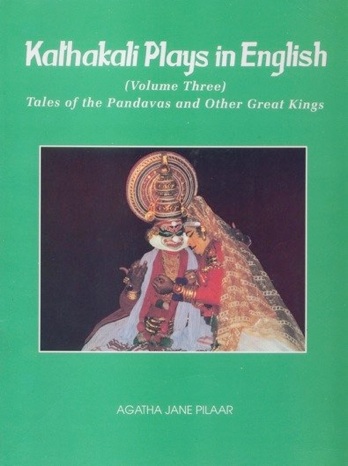Kathakali Plays In English
Volume 3: Tales of the Pandavas and Other Great Kings
Kathakali Plays In English
Volume 3: Tales of the Pandavas and Other Great Kings

The Kathakali plays Rugmangada Charita (The Story of Rugmangada) and Ambarisha Charita (The Story of Ambarisha) feature two other heroic kings who are mentioned in the Mahabharata but who are not of the Santanu line. For my librettos for these plays, both written in the late Eighteenth Century, my collaborator/translator was once again Mr. N. K. Panicker.
I have again reprinted David Bolland’s brilliant synopsis of the Mahabharata from his Guide to Kathakali, to help the viewer/reader “place” the events of the plays in their epic context. Mr. Bolland, a true lover of Kathakali, was most generous with his permission for me to reprint and his blessings on this project.
As well as a Foreword to Volume Three I have reprinted my Preface to Volume Two (Partial) to give more background and guidance to the art to the reader/viewer. The four volumes came out one at a time and were given or sold individually, not as a set, hence there is some repetition.
Colour photos showing the costuming of four character types and two “Special” characters -- Roudra Bhima and nenam (blood) -- appear on the front and back covers, plus inside black-and white “action” photos.
I would recommend reading “Preliminaries to the Main Play(s)” in Volume 4 to anyone going to a Kathakali performance.
For this Web edition ONLY of Kathakali Plays in English, there is an addendum after the last page (p. 59) of Volume 3, which is the Kathakali play Karnasapatham, preceded by a brief introduction. The addendum is placed here because the play is based on a story from the Indian epic Mahabharata, as are most of the other Kathakali plays in Volume 3.
All Photos & Text Copyright 2022 by Agatha Jane Pilaar